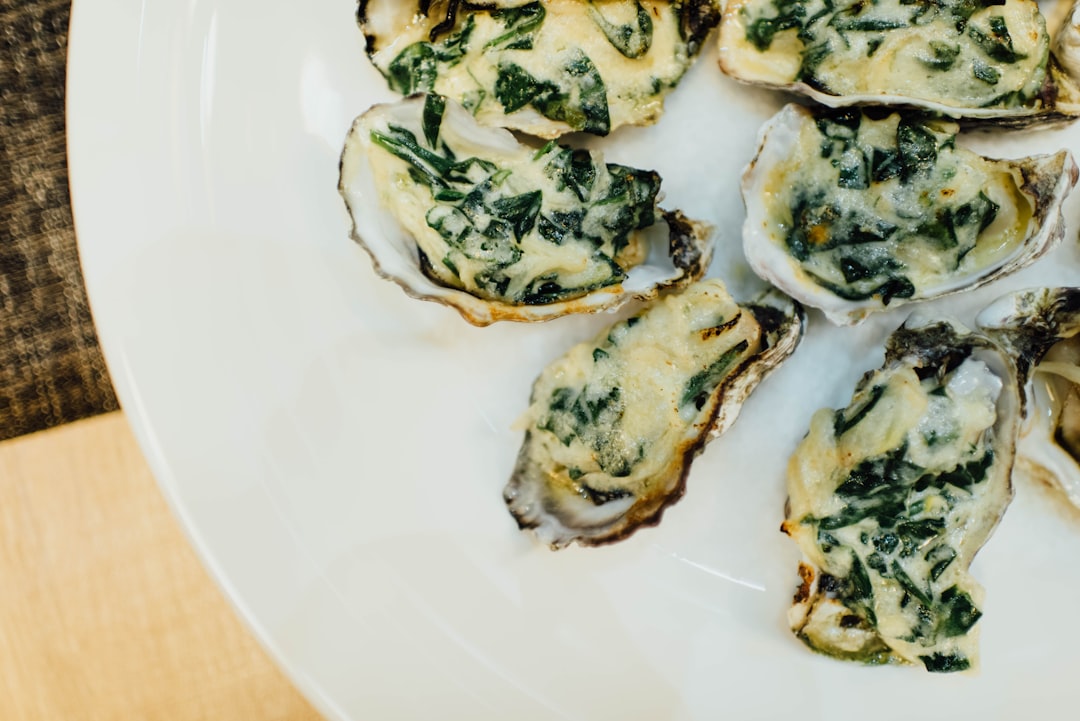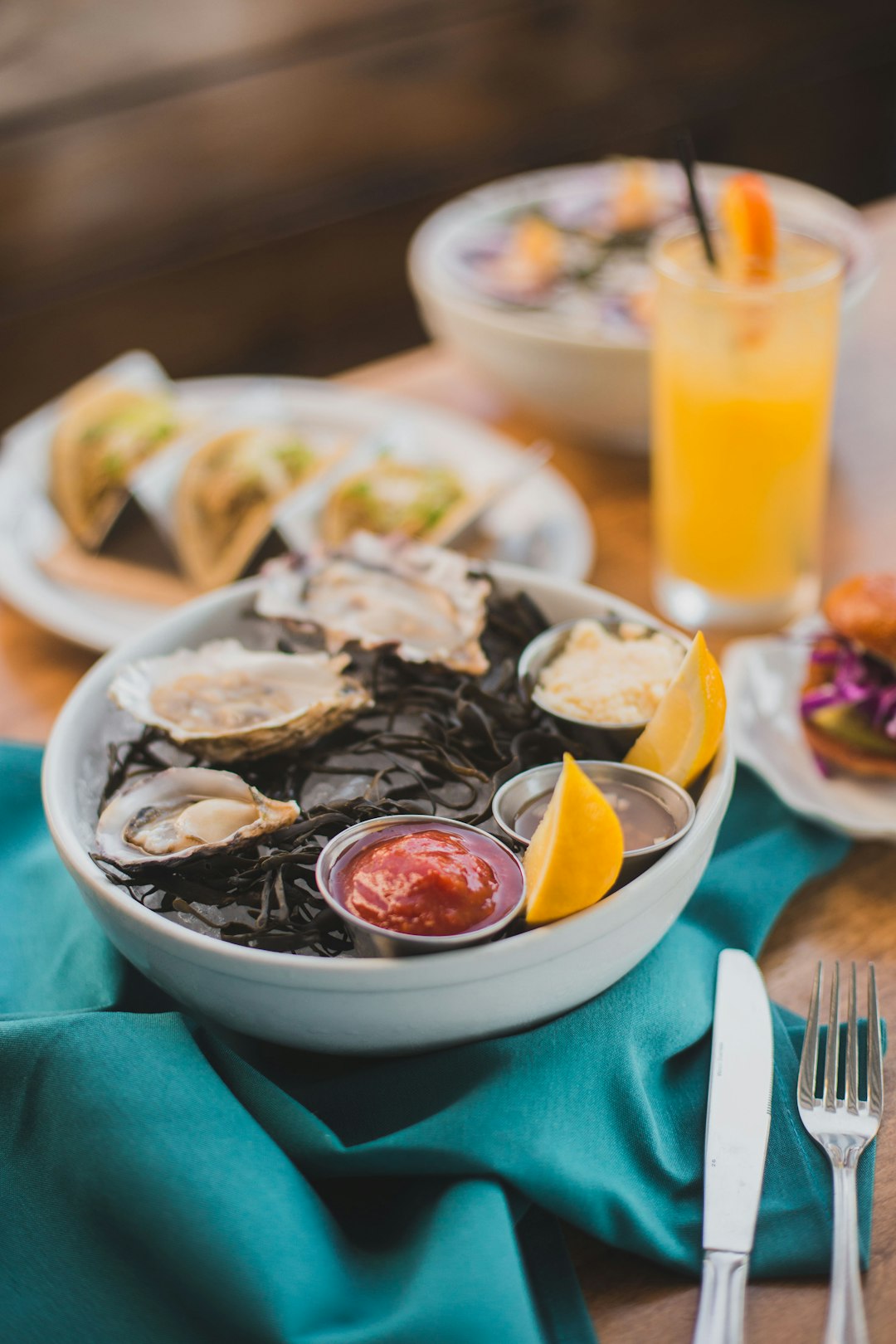Oysters
Unlike most other shellfish, oysters are appreciated for their unique flavour that can range from delicate to robust, and even downright briny. The variety of tastes can be attributed to their habitat - they grow in diverse, even turbulent, tidal waters, where they absorb the flavours of their environment and filter out the nutrients they need to survive.
Oysters, in their natural state, are often hidden beneath the water’s surface, making them difficult to gather. This is why oyster farmers have become an integral part of the oyster economy, devising techniques to ensure the continual replenishment of the beds, while protecting the environment.
For those hoping to take advantage of the oyster’s incomparable flavors, shucking them fresh is a must. Learn the correct ways to open oysters without damaging them and you will be rewarded with succulent, sweet morsels bursting with flavour. For those who don’t have the time or experience to shuck and clean the oysters, many restaurants offer them prepared with a variety of sauces, ensuring a tantalizing experience.
The history of oysters is a fascinating and long one, stretching back thousands of years, when the first evidence of their consumption appears in ancient civilization records. Throughout the centuries, various cultures have taken up this food and developed their own traditions, from decadent celebrations in France to more humble yet exotic preparations of Southeast Asia.
Oysters may present a challenge to those transforming them into a dish, but their reward is ample. The sheer complexity of the flavour profile and texture of oysters make them a unique culinary delight, providing a taste sensation that is second to none.
Oysters dishes
A selection of Oysters dishes.
Angels on horseback
Angels on Horseback – a truly unique and delightful dish that is sure to tantalise your tastebuds! This English hors d’oeuvre has its roots in the Victorian period, but has been adapted for modern tastes and still found on bar menus throughout the world today.
Angels on horsebackOyster omelette
Oh, the simple yet decadent Oyster omelette! It's a classic Asian delight sure to tantalize your taste buds and leave you wanting more. This savory dish is a perfect mainstay in any meal, be it brunch, lunch, or dinner. Rich, fluffy, and bursting with oysters and flavorful egg, this dish is truly a delight!
Oyster omeletteOyster sauce
The term "Oyster sauce" is enough to send shivers of anticipation down the spines of any culinary enthusiast. It's a tantalising combination of savoury umami richness, sweet succulence, and tangy pungency, creating a truly unique and divine flavour unlike anything else.
Oyster sauceOyster vermicelli
There is something undeniably sumptuous about Oyster Vermicelli. This Chinese delicacy is a unique melding of sea-salt flavors, chewy noodles, and the indulgent essence of briny oysters. It’s an umami bomb that transports you to a sensorial nirvana of sheer culinary pleasure.
Oyster vermicelliOysters Kirkpatrick
Ah, the ever-so-delicous Oysters Kirkpatrick. In the culinary world, it is a dish that reigns supreme among all other seafood offerings. The combination of succulent oysters, tart tomatoes, salty bacon, and pungent Worcestershire sauce creates a unique and delectable flavor that is sure to tantalize even the most discerning of palates.
Oysters KirkpatrickOysters Rockefeller
If you're looking for a dish that's truly decadent, then Oysters Rockefeller is guaranteed to be an indulgent experience. Not only do these succulent oysters come draped in a sinful buttery sauce, but they also boast a rich history that reaches back well over a century.
Oysters RockefellerOysters
Oysters are a delicacy, both in terms of taste and versatility. Whether you’re looking for a sophisticated seafood dish or an easy starter, oysters offer culinary opportunities that few other seafood varieties can match.
Typically served raw with a dash of lemon juice and a few drops of hot sauce, these slippery deep sea molluscs are surprisingly flavourful on their own. For an added edge, some oyster aficionados like to use a combination of unexpected ingredients, such as garlic butter, horseradish and Worcestershire sauce.
When it comes to food pairings, oysters tend to shine with other strong flavours. Crisp white wines – especially sauvignon blanc and pinot grigio – go especially well, while more adventurous palates might prefer to go for something a bit more unusual like a sparkling rose or a dry beer with a hint of bitterness.
Cooked dishes involving oysters are equally imaginative and artfully crafted. Grilled oysters glazed with honey and chilli is a great way to bring out subtle smoky nuances in the delicate shells, while baking them in garlic butter is always guaranteed to turn out succulent morsels every time. The possibilities are vast, but the one sure thing is that oysters will always deliver a mouth-watering sensation.
Of course, there are the classic dishes too. Oysters Rockefeller – with its layers of mornay sauce, butter, cheese and herbs – is a timeless favourite, while BBQ oysters with garlic and parsley is a crowd pleaser when hosting larger gatherings.
From raw and simple to cooked and complex, oysters provide a palate of flavour profiles to tantalise all tastebuds. A seafood staple, these grey morsels hold a unique place in any chef’s pantry.
History of Oysters
Ah, the delectable oyster. A delicacy of the sea that has delighted palates for millennia. But, have you ever wondered about the origin of these succulent morsels? As it turns out, there is a much richer history behind them than you may have assumed.
The truth is, oysters have been around for millions of years, with fossils of the mollusk being discovered in geological layers dating back to the Cretaceous period. It has been widely speculated that these prehistoric predecessors fed exclusively on flora and algae. Moreover, their hard shells soon began to be utilized by their aquatic neighbours as homes and shelters.
Fast-forward to today and the oyster’s popularity continues to soar, with their succulence coming tantalizingly close to cultural ubiquity. However, not all is as it seems when it comes to oysters – their relationship to humans is a complicated one, with a number of contentious moral dilemmas surrounding their consumption.
Cultures around the world have consumed and revered oysters for centuries. The ancient Greeks are said to have held them in high esteem and to have believed that consuming them increased longevity. They enjoyed them at feasts and washed them down with copious amounts of wine. The Romans also shared this inclination, using them as a status symbol during lavish banquets. Beyond these cultures, people in Egypt, Mesopotamia, and China are known to have added them to their culinary repertoires.
It wasn’t until the 19th century that oysters became more accessible to the general public, as they were among the first seafoods to be mass-cultivated. Soon enough, they graced the tables of ordinary households, reflecting the emergence of a new ‘oyster culture.’ By the 20th century, the oyster was on its way to becoming a quintessential foodstuff, rife with associations to luxury and good living.
Today, the oyster has become ubiquitous, available across numerous countries and cultures. Its popularity knows no bounds, and despite rise of ethical concerns, its culinary reputation remains unscathed. And so, as we continue to savour the distinct flavour of these tender treats, we can take a moment to reflect on their fascinating history and the role that they have played in movement through time.









